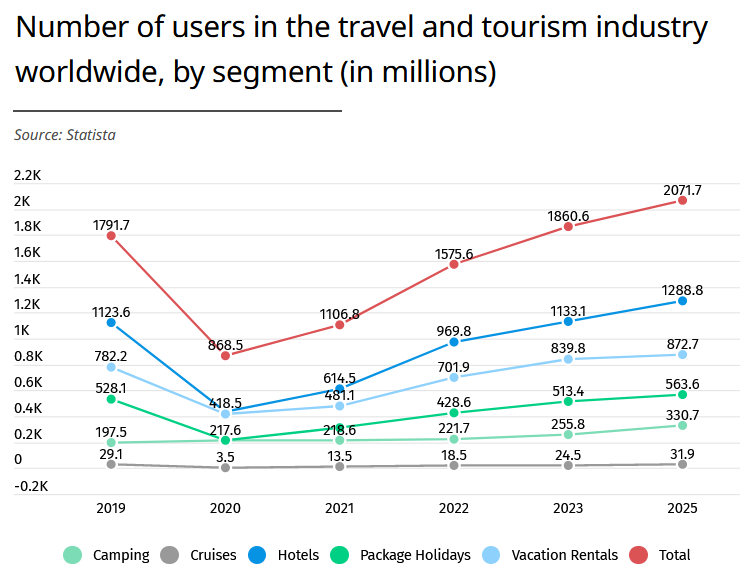Travel and tourism worldwide are finally bouncing back after surviving the most challenging two years in the industry’s history since the onslaught of the COVID-19 pandemic. Travel and tourism revenues are set to grow 45% this year compared with last, with further growth of another 20% next year.
This will amount to the global travel and tourism industry being worth US$716,8bn in 2022, a huge YoY increase. Revenues then look set to rise to US$852bn in 2023.
For comparison, the global travel industry reached revenues of US$776,4bn in 2019, according to Statista, a German company specialising in market and consumer data.

The UNWTO World Tourism Barometer recently showed that international tourist arrivals from January to July 2022 almost tripled compared with the same period last year, reaching 57% of the pre-pandemic numbers.
However, some market segments still lag behind in terms of recovery. Although the cruise industry revenues are forecast to jump by 35% YoY to US$25,1bn in 2023, that is still below pre-COVID levels.
In 2019, cruise trips and holidays brought US$27,5bn) worldwide, US$2,4bn more than estimates for the next year, according to data presented by Augusta Free Press.
Although the number of cruise travellers will grow by 35% YoY to 24,5 million next year, that is still 4,6 million fewer than in 2019.

Statista also shows that worldwide, hotels will see over 1,1 billion users next year, up from 969 million this year.
Hotels, the largest part of the travel and tourism industry, are expected to bring in US$406,5bn in revenue in 2023, up from US$348bn his year. Package holidays, accounting for 32% of total revenues, are predicted to account for US$279,7bn next year, 22% more than in 2022. Vacation rentals follow with US$97bn in revenue, a 17% increase on this year.
The number of people using vacation rentals, the second-largest segment by the number of users, is set to grow by 19% YoY to almost 840 million in 2023. Package holidays follow with 513 million users, up from 429 million this year.






















